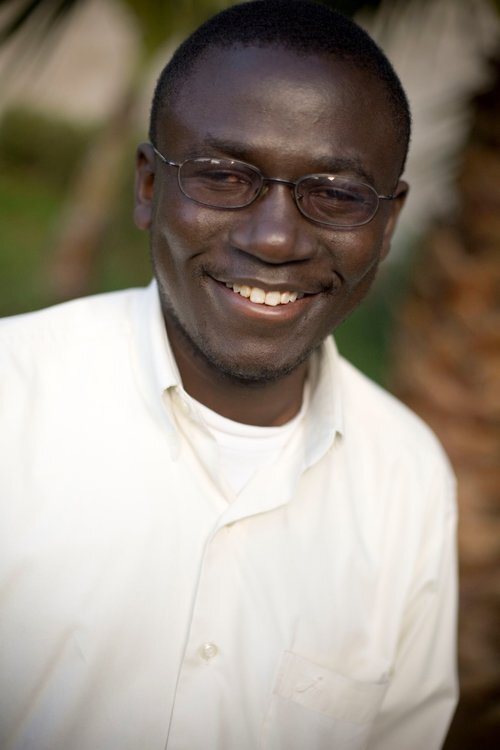Success Story: Daniel Ochieng
In 2000, at the height of the HIV pandemic, a quiet, 24-year-old medical student from Kisumu lay in a hospital bed without much hope.
Daniel Ochieng
Daniel had at first hid his HIV-positive status from his family and friends. But the effects of AIDS soon became impossible to disguise. Unable to fight off infection, Daniel's body was breaking down. Severe coughing and chest pain led to a diagnosis of tuberculosis, followed by intense bouts of diarrhea and a urinary tract infection. Daniel suffered from oral thrush, a painful infection that caused his mouth and throat to be coated with a thick white substance that resembled cotton. That May, he had permanently lost sight in his right eye due to cytomegalis virus.
Dr. Joe Mamlin was in Kenya working in a partnership between Moi University, Moi Teaching and Referral hospital and Indiana Univeristy’s Medical school, and had been one of Daniel’s professors. Dr. Mamlin had already seen dozens of young Kenyan men and women infected with AIDS waste away and die. He realized that it shouldn't have mattered that Daniel, too weak to raise his arms to feed himself, was his student. But it did matter. Something about Daniel lying next to another patient in the same bed, waiting for death challenged all of the well-settled reasons why HIV/AIDS was not being treated in Africa.
Dr. Mamlin left the hospital that night and composed an email to Dr. Bob Einterz, the Indianapolis-based director of the Indiana-Moi partnership. Dr. Mamlin wrote that with Kenyans like Daniel dying by the hundreds each week, the partnership simply could not continue on as before. Indiana University must fully engage in the struggle against HIV/AIDS, or it should fold its tents and go home.
Dr. Mamlin immediately started Daniel on anti-retroviral medication. For a month, Daniel, who was nearly 50 pounds underweight, was still too weak to leave his bed. But soon the medicine took hold. Dr. Mamlin remembers walking between hospital wards one day and noticing a patient sitting on the grass soaking in the sun. It was Daniel, and it was then, Dr. Mamlin said, that he knew he would survive.
For a year, Daniel remained the only Indiana-Moi patient receiving anti-retrovirals. But his dramatic recovery made it even more difficult for the Indiana-Moi physicians to stand by and watch other AIDS patients die without treatment.
"Daniel's recovery was the first hope that any of us saw in Kenya," Dr. Bob Einterz said. The cross-continental calls, emails and visits continued, evoking Daniel's successful treatment and questioning the idea that HIV/AIDS could not be treated in sub-Saharan Africa. Out of those discussions came the very partnership that formed AMPATH, which has grown into Africa's largest and most comprehensive HIV/AIDS treatment and control program, helping thousands of people receive the same care that brought Daniel back from the brink of death.
Daniel is now married, a father, and the leader of AMPATH's outreach efforts. He helps insure that the HIV-positive patients that followed after him take their medicine and comply with their treatment. Daniel insists that this treatment not only saved his life and the others who are already HIV-positive, it provides the key to the prevention efforts that are focused on encouraging HIV testing and safe practices. "Knowing there is treatment for the disease makes people take the test," he says.

